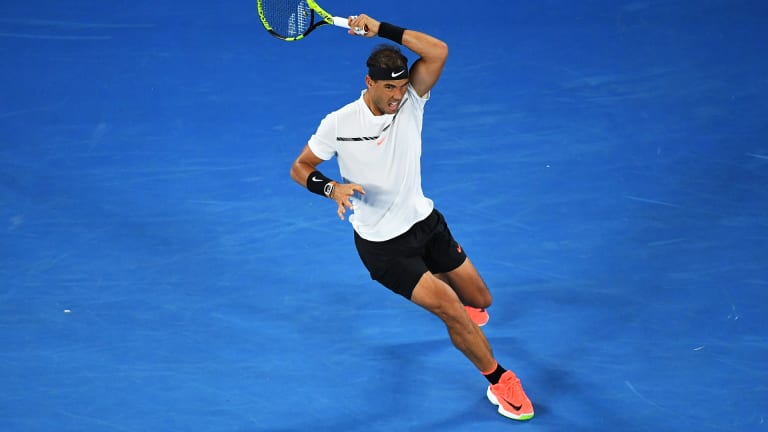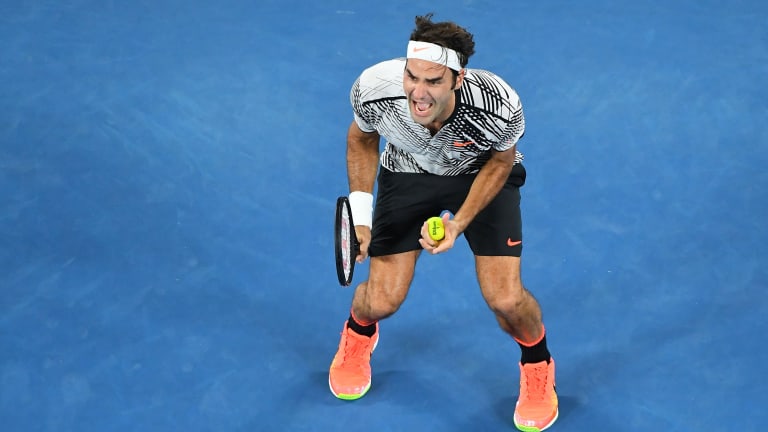What's the one that got away from Rafael Nadal?
By Oct 14, 2024Lifestyle
Rafael Nadal’s shirt from his career Grand Slam-completing victory in 2010 is available for auction
By Apr 10, 2025Social
Watch Rafael Nadal stress out over Real Madrid, then celebrate a dramatic victory
By Apr 02, 2025Social
Rafael Nadal congratulates academy students Eala, Wong on big Miami wins
By Mar 22, 2025Social
"Hola TikTok!" Rafael Nadal racks up 3 million views
By Mar 15, 2025Social
Toni Nadal calls out ‘not-so-clean players’ for taking shots at Jannik Sinner
By Feb 27, 2025Tennis.com Interview
Rodrigo Pacheco Mendez: inspired by Nadal, dreams of facing Sinner, Mexico's tennis answer?
By Feb 26, 2025The Business of Tennis
Rafael Nadal set for $94-million profit after selling part of his stake in tennis academy
By Feb 11, 2025Lifestyle
Roger Federer’s Wimbledon-winning racquet sells for more than $100,000 in tennis auction
By Feb 10, 20252024 Year in Review
A Poem for 2024: An ode to Zendaya, a biblical bee invasion, and the art of playing naked
By Dec 29, 2024What's the one that got away from Rafael Nadal?
The 2017 Australian Open final may go down as Roger Federer's finest victory—and his rival's biggest regret.
Published Oct 14, 2024
Advertising

After the first four, crisp, see-saw sets, Nadal scored a breakthrough to take a 3-1 lead in the fifth. But Federer was determined to keep pushing, to remain faithful to his strategic goals.
© AFP via Getty Images
Advertising
Advertising

During his run to the 2017 Australian Open final, Nadal fired forehands in a cool mix of black and white, with a pop of neon pink.
© 2017 Getty Images
Advertising
Advertising

Federer ended a four-and-a-half-year Grand Slam title drought with his Australian Open triumph.
© 2017 Getty Images